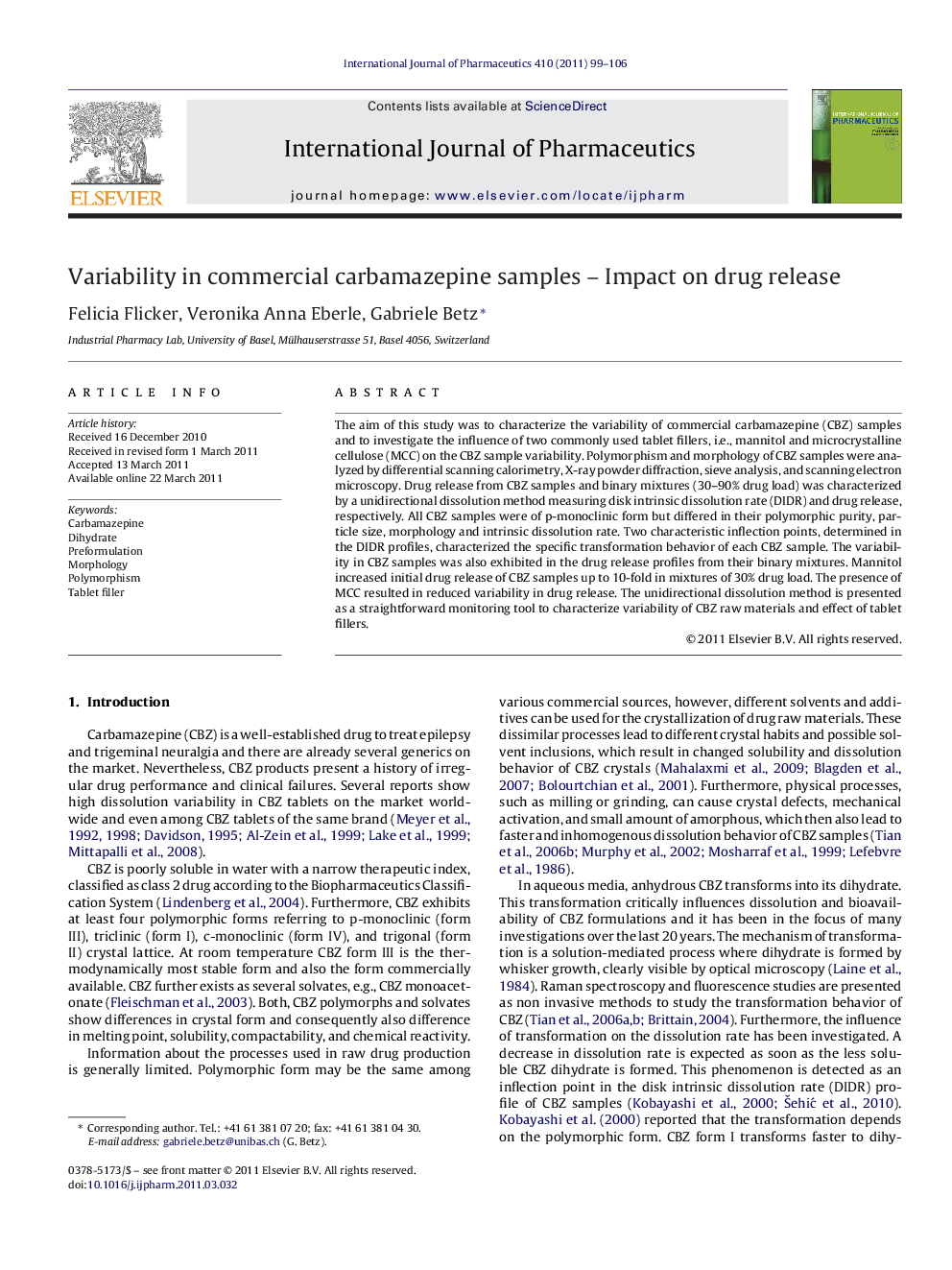| Article ID | Journal | Published Year | Pages | File Type |
|---|---|---|---|---|
| 2503342 | International Journal of Pharmaceutics | 2011 | 8 Pages |
The aim of this study was to characterize the variability of commercial carbamazepine (CBZ) samples and to investigate the influence of two commonly used tablet fillers, i.e., mannitol and microcrystalline cellulose (MCC) on the CBZ sample variability. Polymorphism and morphology of CBZ samples were analyzed by differential scanning calorimetry, X-ray powder diffraction, sieve analysis, and scanning electron microscopy. Drug release from CBZ samples and binary mixtures (30–90% drug load) was characterized by a unidirectional dissolution method measuring disk intrinsic dissolution rate (DIDR) and drug release, respectively. All CBZ samples were of p-monoclinic form but differed in their polymorphic purity, particle size, morphology and intrinsic dissolution rate. Two characteristic inflection points, determined in the DIDR profiles, characterized the specific transformation behavior of each CBZ sample. The variability in CBZ samples was also exhibited in the drug release profiles from their binary mixtures. Mannitol increased initial drug release of CBZ samples up to 10-fold in mixtures of 30% drug load. The presence of MCC resulted in reduced variability in drug release. The unidirectional dissolution method is presented as a straightforward monitoring tool to characterize variability of CBZ raw materials and effect of tablet fillers.
Graphical abstractFigure optionsDownload full-size imageDownload as PowerPoint slide
